2018 Jaguar E-Pace First Drive - Athletic, Not Electric

Jaguar claims the F-Pace, its first crossover SUV, more or less doubled the automaker’s sales almost overnight. That little factoid makes a statement about the state of the automotive industry – namely, that crossovers are hot and that just about every brand needs to sell one to survive, regardless of a brand’s history.
Just ask Porsche. If not for the Cayenne (and now the Macan), could that company continue to afford to build the venerable 911, as well as the Boxster and Cayman?
The answer, of course, is probably not. That’s a big part of the reason why even “exotic” brands such as Bentley and Lamborghini have gotten into, or are getting into, the SUV game.
Certainly, Jaguar has picked up on the trend. Following the F-Pace comes the smaller E-Pace, and soon to follow is the I-Pace, complete with an all-electric powertrain. It may still seem weird to many of us that Jaguar is building and selling crossovers, but we’re also living in an era in which former Jaguar owner Ford offers a turbocharged four in the Mustang (as something other than a weak “base” powerplant) and Mitsubishi is planning on using the Eclipse name on a crossover. Things change, man.
Consider that Jaguar’s sales saw a 124-percent increase (thanks, former TTAC’er Tim Cain) in the six months after the F-Pace launched, compared to the six months previous to the launch. The XE played a part, sure, but the F-Pace did wonders for Jaguar. So it’s only natural that other crossovers would follow.
Full disclosure: Jaguar paid for my flights (in business class) all the way to and from Corsica, France (!), as well as my hotels and meals, so that I could drive the all-new E-Pace. Also, I may or may not have gotten caught speeding by a speed camera (it’s unclear), and I have promised Jaguar I will pay the fine if I was indeed caught over the limit. Jaguar left us two books about the E-Pace and Corsica, which I was going to leave behind until I realized both may contain information that would be relevant to this review. Jaguar also helped me with my video stand-up for TTAC’s YouTube page.
Odd nomenclature aside (why is the E-Pace NOT the electric one?), the E-Pace rides on a different platform than the larger F-Pace, and Jaguar considers its competitive set to include the BMW X2 and X3, the Audi Q3, the Mercedes-Benz GLA-Class, and perhaps the Lexus NX and Infiniti QX50. Jaguar didn’t mention the Alfa Romeo Stelvio, but that also seems like a natural competitor.
Before diving into this, I have to say I went in fighting a bit of bias. Not pro-Jag, but the opposite. I knew that if I liked the E-Pace, you out there in Best and Brightest land might just accuse me of being bought off by a trip to Corsica. I tried to keep an open mind, and well, what do you know, I mostly liked it. That had nothing to do with France – it’s just a well-done sporty compact luxury crossover.
Despite riding on a completely different platform than the F-Pace and having its own unique styling cues, the family resemblance is clear. At a distance, the E-Pace looks like a truncated F-Pace. This is both good and bad – I like the overall look of the F-Pace, so I am glad the E-Pace has similar styling, but the larger F-Pace looks better proportioned – the E-Pace looks a little chopped from some angles.
Chopped it may be, but from other angles, the E looks sporty – it just depends where you’re standing. Beauty is in the eye of the beholder in relation to the car, goes this version of the old quote I just made up.
Inside our tester, which spec’d out as an equivalent to a R-Dynamic in HSE trim (more on that below), an available large infotainment screen dominates the top half of the center stack, while the bottom accounts for the necessary buttons and serves as home to three large HVAC knobs. Push the digital readout in the middle to operate the heated and cooled seats – it’s a neat trick that saves space but adds steps to operating a simple function. There is a radio volume knob, but it’s small and oriented nearest the passenger for some inexplicable reason. I am no interior designer, but it looks like Jag could’ve not only placed the knob nearest the driver, but there even appears to be room for a tuning knob. The lack of passenger grab handles also struck me as odd.
At least the infotainment screen is easy to read, thanks to clear graphics, and it’s intuitive enough. Our pre-production tester did run into a minor issue with displaying the correct music information when using the harddrive to play tunes.
The digital gauges are easy to read, as is the available head-up display, and while the cacophony of buttons on the steering wheel looks intimidating, they’re simple enough to use while motoring.
Perhaps unsurprisingly for a vehicle of this size, rear-seat space is tight. If you plan on double-dating much, you might want to shop a size up.
Euros get all the fun, at least when it comes to E-Pace choice. Us ‘Muricans get only two engine choices – both four-bangers of the turbocharged variety, and we don’t get front-wheel drive. We do get two types of all-wheel drive – one which shifts torque to the rear axle on demand, and another that handles the torque distribution duties a little differently. Essentially, the standard AWD system is constantly shifting torque front and rear as conditions dictate, while the optional system – called Active Driveline – switches to front-drive when cruising in order to reduce parasitic losses via the driveline. It can quickly switch back to AWD should the conditions warrant it. One-hundred percent of that torque can go to either rear wheel, as necessary.
On the road, this means that if you overcook a corner and start to experience understeer, you can feel the rear kick around a bit to guide you through. Not that, uh, I found out by underestimating a few corners and coming in a tad too hot, or anything like that. No, nope, not at all.
Joking aside, the E-Pace is a solid corner-carver, at least as solid as any luxury compact crossover can be, especially in dynamic mode (which quickens the steering without firming up feel). Engaging and fun to drive, at least by crossover standards, it felt at home in the mountains.
Ride-wise, the E-Pace is stiffly sprung, which Jaguar PR told me was the idea – Jaguar vehicles will usually be tuned stiffer than their Land Rover brethren. This stiffness was felt on the pot-holed, two-lane roads of Corisca but there was no chance for freeway driving – I am not even sure if there is a freeway in Corsica.
The top-end 2.0-liter turbo four (296 horsepower, 295 lb-ft of torque) provided solid punch, but it took a second for the nine-speed automatic transmission to kick down. That transmission was otherwise seen and not heard during cruise, but the wonky shifter frustrates during parking maneuvers. You think you’re in gear when you’re actually in neutral. I prefer JLR’s circular shifter, but that’s just me.
Also, for some odd reason, the turbo four sounded like a diesel at times.
I can’t write a fair comparison of the E-Pace to most of its competitive set, at least not yet, as I’ve not driven most of the competing crossovers. I’ve only driven the Stelvio (in Ti trim), the QX50, and the NX – and I didn’t get the chance to drive the Stelvio hard on curvy roads. As for the NX, I drove it so long ago that the 2016 presidential election wasn’t yet on the cultural radar.
The E-Pace does outhandle the QX50 (which isn’t as stiffly sprung), which I thought was capable in its own right. Then again, the E-Pace is more focused on being sporty than the QX.
The E-Pace is a sporty little thing, but comfort and convenience matter much in this segment. Like other compact luxury crossovers, the E-Pace starts at a reasonable price but ticking option selections will run up the bill quickly.
You can build an E-Pace one of two ways – package it together by trim level or shop a la carte, piling options on individually. The latter will cost you more, but if you want an HSE trim vehicle without actually selecting HSE, you can do that.
As it stands now, you can select an E-Pace with the base 2.0-liter turbocharged four-cylinder (246 horsepower) or an R-Dynamic with the more-powerful four. The R-Dynamic adds chrome exterior trim and has different bumpers and a black gloss grille finish. A this-year-only First Edition model comes with the base engine, standard panoramic sunroof and head-up display, 20-inch wheels, and exclusive trim bits.
If you don’t pick the R-Dynamic, you can choose from base, S, and SE trims, while the R-Dynamic is available as S, SE, and HSE. Available wheel sizes include 17-, 18-, 19-, and 20-inches. Available features include powered tailgate (with gesture control available), panoramic sunroof, head-up display, navigation, premium audio, USB, Bluetooth, rear-view camera, lane-keep assist, emergency braking, heated front seats, cooled front seats, heated rear seats, 4G in-car Wi-Fi hotspot, Jaguar activity key, front and rear parking aid, and driver-condition monitor.
It’s hard to directly compare the Euro-spec cars we drove to U.S. specs, but the vehicle I drove for a day and a half would set you back approximately $58,210, including the $995 destination fee. It was optioned out similar to a loaded HSE, with a pre-option price of $47,250. That $58K price tag puts it close to a loaded QX50, by way of comparison.
Those options were the 12.3-inch interactive display ($565), 18-way electric heated and cooled memory front seats with heated rear seats ($1,330), standard Wi-Fi, activity key ($410), powered gesture tailgate ($460, plus $565 for the keyless entry system you need first), panoramic sunroof ($1,225), head-up display ($970), “drive pack” driver’s assistance package (blind-spot monitoring, adaptive cruise control, $970), red brake calipers ($410), black exterior package ($220), metallic paint ($590), and 20-inch wheels ($2,250).
So even if we’re approximating, you have about a $20,000 difference between the base E-Pace ($38,600, before $995 D and D fee) and a top-of-the-walk HSE. The base model doesn’t lack for content – it has some of the key driver’s assistance equipment (such as lane-keep assist), for example, along with rear fog lights, LED headlights, leather steering wheel, push-button start, and dual-zone climate control.
Altogether, the E-Pace is in athletic compact luxury crossover that sacrifices some ride comfort for the sake of sport. It’s handsome in and out, but quirky design decisions mar an otherwise well-done interior. Rear-seat space is limited, too.
Athletic but requires some sacrifice, may be expensive, and posseses a few quirks. As any cat owner will tell you, those are feline traits to a T.
[Images © 2018 Tim Healey/TTAC]

Tim Healey grew up around the auto-parts business and has always had a love for cars — his parents joke his first word was “‘Vette”. Despite this, he wanted to pursue a career in sports writing but he ended up falling semi-accidentally into the automotive-journalism industry, first at Consumer Guide Automotive and later at Web2Carz.com. He also worked as an industry analyst at Mintel Group and freelanced for About.com, CarFax, Vehix.com, High Gear Media, Torque News, FutureCar.com, Cars.com, among others, and of course Vertical Scope sites such as AutoGuide.com, Off-Road.com, and HybridCars.com. He’s an urbanite and as such, doesn’t need a daily driver, but if he had one, it would be compact, sporty, and have a manual transmission.
More by Tim Healey
Latest Car Reviews
Read moreLatest Product Reviews
Read moreRecent Comments
- SCE to AUX Inflation adjusted $79k today (!), so I guess $28k is a bargain....This is another retro car that was trying too hard, but it is very nice.
- EngineerfromBaja_1990 It might provide an edge in city driving but from what I've read elsewhere the Hybrid trucks are 600 lbs to 700 lbs heavier than the gas only trucks. That translates to a curb weight of around 5000 lbs which is not uncommon for a full size truck.And a test drive suggested the Hybrid is not quicker than the gas only trucks. So it looks like the Hybrid powertrain is pretty much compensating in power for all that added weight while not providing significant fuel savings. Not what many would expect after shelling out an extra $5K - $7K for the next step up in power.
- Buickman DOA like no other!
- 3-On-The-Tree Yes anything offroad or high performance isn’t cheap. My oldest son would do occasional burnouts in his Mustang GT then he had to buy tires for it. Needless to say he doesn’t do burnouts anymore.
- Slavuta I recently was looking at some Toyota parts. I think this ebay user sells totally counterfeit Toyota parts. Check the negative reviews
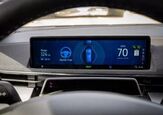
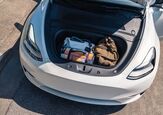






















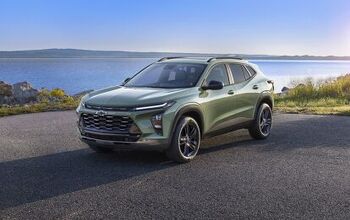
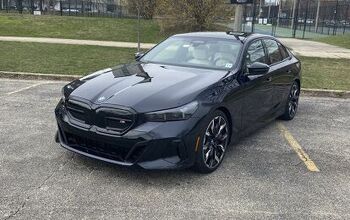
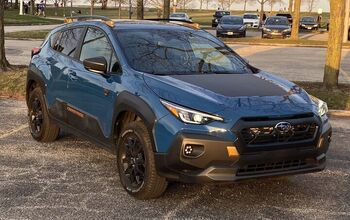
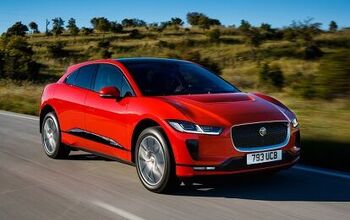
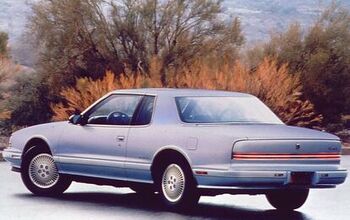

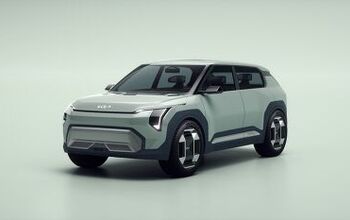
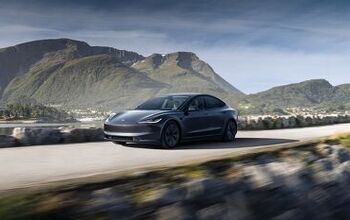
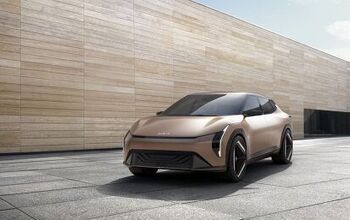
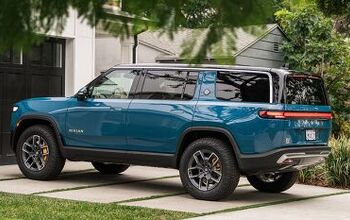



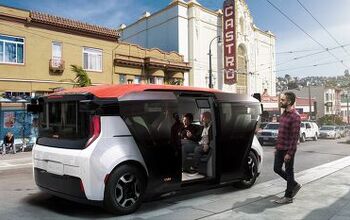
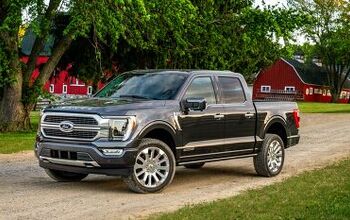
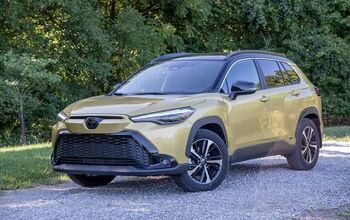
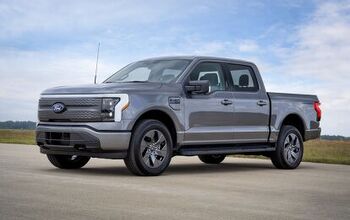
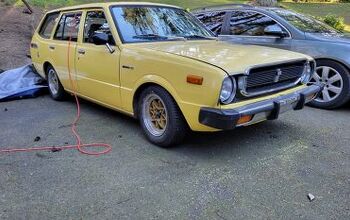
Comments
Join the conversation
I actually like the way this looks. It almost reminds me of my beloved 1st gen FX in visual proportions. I'd love a diesel in this thing.
The volume knob on the passenger side actually makes complete sense. The driver has controls on the steering wheel. The knob is just there for the passenger, so why not make it easy to reach?